- Double-click
 SSSampling.
Pop-up below interface
SSSampling.
Pop-up below interface
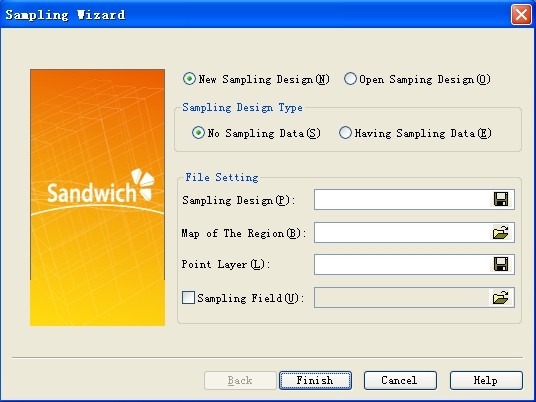
Figure 1.Starting interface
- Under "Sample Design": Click on
 ,
Choose a suitable file path to save
the project files, such as: “sampling project”
,
Choose a suitable file path to save
the project files, such as: “sampling project”
- Under "Map of The Region" : Click on
 ,
choose the
hs_town.shp file
,
choose the
hs_town.shp file
- Under "Sample Site Layer": Click
 ,
choose a suitable path and
enter the saved sample site file, for example: sampling site
,
choose a suitable path and
enter the saved sample site file, for example: sampling site
2 - 4 steps, as shown below:
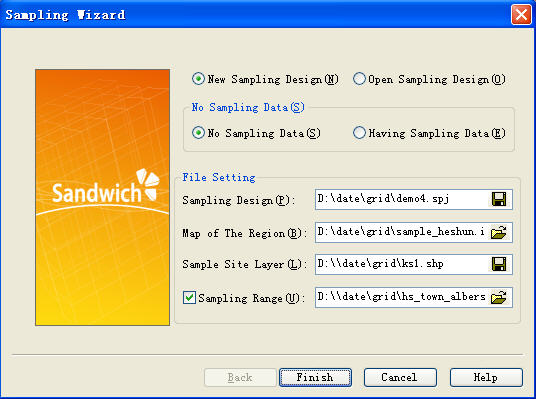
Figure 2.
Input the correlative project file
- Click on the "Finish"
- Note: If at this time a sample range file and the map of the region is area based object, there will be no need to change the sampling range settings. If the map of the region is site based object, then the sampling range should includes the object region for sample site .(for example, the sampling site is samlingframe.shp, the sample range is hs_county.shp).
-
After the previous step have been completed, click out of the following interface
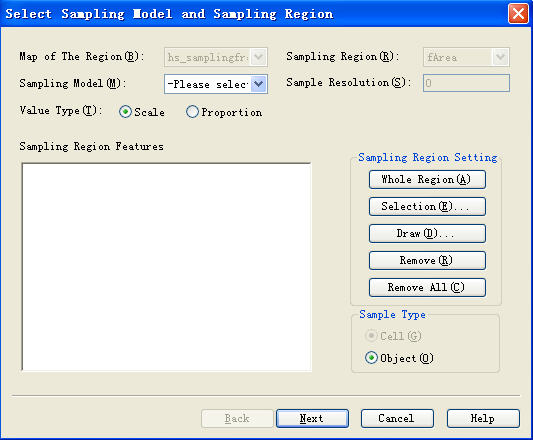
Figure 3.
The setting graph of the sampling area
- Choose “Spatial simple random sampling model”
-
Set sampling resolution as 0.01, move pop-up window, you can see in
the middle of map of the region there is a small box,
this is the smallest sampling unit based on input sample resolution.
According to input different sample resolution, the size of the box
will change in real time(if map of the region is site
based object, there's no need to set up sampling resolution)
-
Select sampling region: There are three options (each method will
need to be tested, but only one may be used at a time)
i. Employing this region: Select the polygons underlying the map of the region.
ii. Manual option: hold down the shift key while clicking to select a polygon, you can select multiple polygons, and then click on the “End” button on the Toolbar
iii. Expert draw: Use the mouse to draw the sample polygon region, left-click start drawing, right-click to complete, and then click on “End” button on the Toolbar.
-
Click on the "Scale" (or Proportion, determined according to sample target value)
- Click on the "Next"
- After the previous step have been completed, click out of the following interface
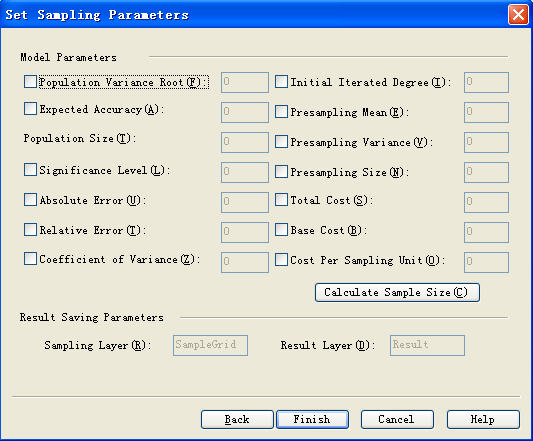
Figure 4.
Compute the sample size
- Input parameters and verify the correctness of the input parameters
-
Click on the "Compute Sample Size," and obtain the relationship
graph between precision and sample size and cost as below
-
Select a different function, obtain a different sample precision
relationship graph
-
Click on the name of calculation functions, we can see that each
function uses different parameters
- Select "Proportion", which is the actual number of samples compared to the theoretical value, as shown below
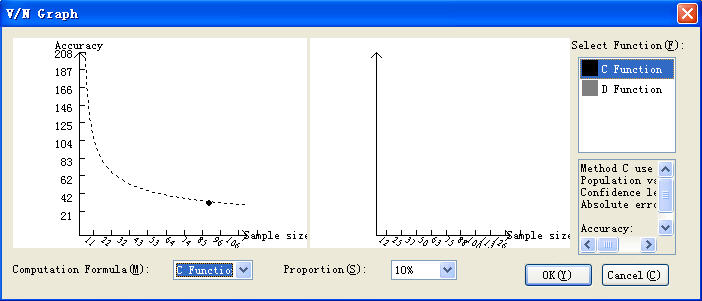
Figure 5.
Sample size graph
(It is the accuracy-sample size graph on the left, it is the cost-sample size graph on the right, the inputted cost and other parameters can be displayed on the right graph)
- Click on “Back” to return the parameters interface, can modify parameters
- Click on the "Finish", determined sample function
- Back to the design parameter interface, click "Finish", complete sample size calculation and system will generate sample site
- Double-click
 SSSampling.
Pop-up Interface
SSSampling.
Pop-up Interface
-
Select " Open Sampling Design ", open the project file which
generated in the first step
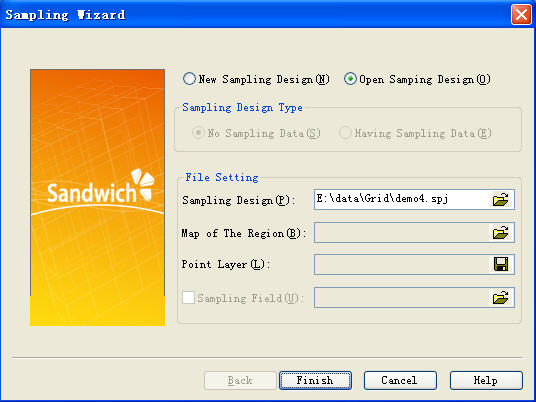
- Click OK, click out of the pop-up dialog for sample data input
-
Select “
Import from File
”, open the saved data file (the file format is
txt), then select the property of the calculation value (generally
value)
-
Or select manually input file, enter value directly under the value
field in the form. Then select the property of calculation value
- Sampling model has two kinds of situations
i. Directly click "Next", obtain sampling results
ii. Select sampling model, and then select spatial random model, get different results. Or choose stratified, spatial stratified and sandwich layered model, this time pop-up dialog box, which need to enter the relevant stratification file(for example: If the data is in order, natural stratification file using stritify.shp, reporting unit using hs_town.shp which only used in the sandwich model).

Figure 7. Input the data
- Click “Next”, show up a sampling results map
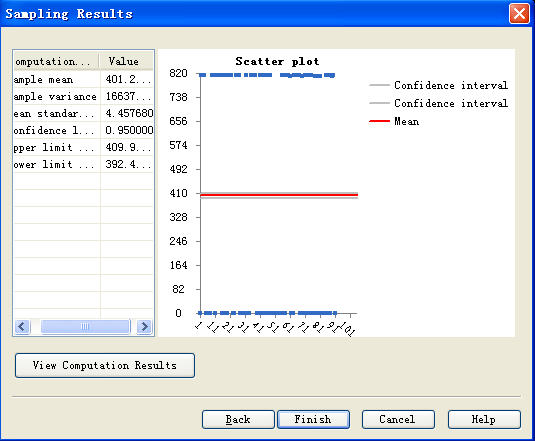
Figure 8 Sampling results